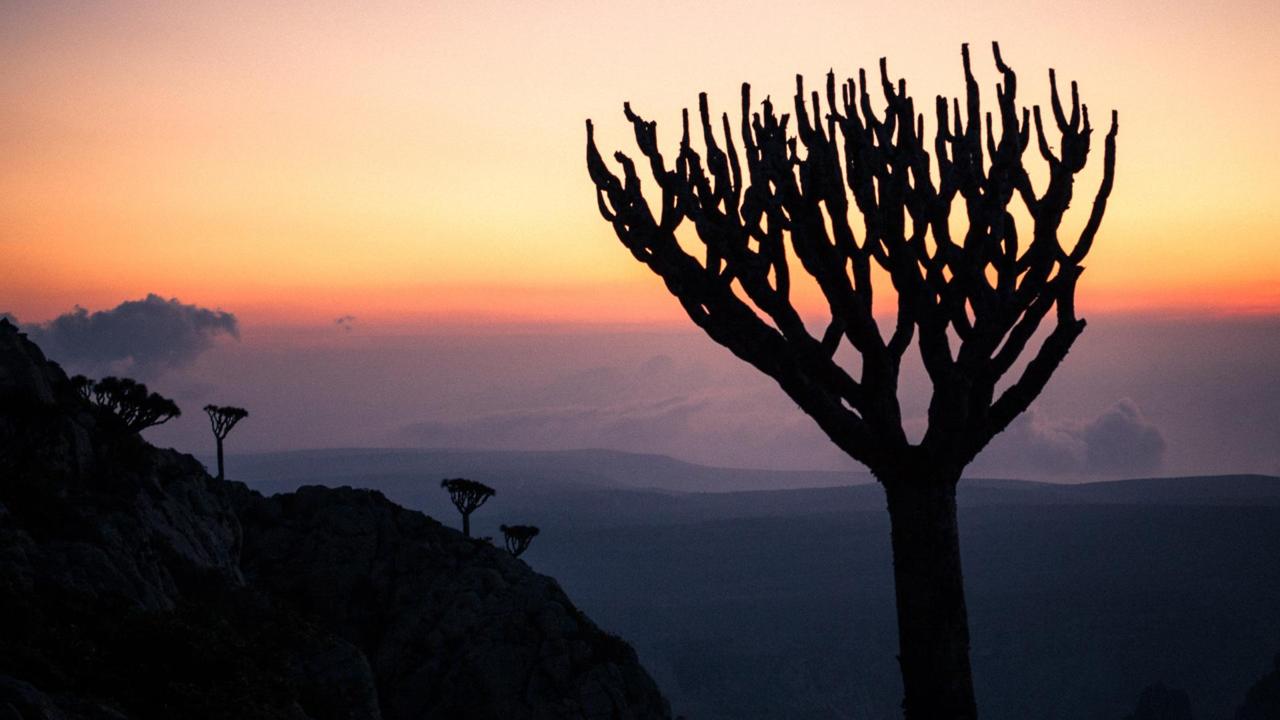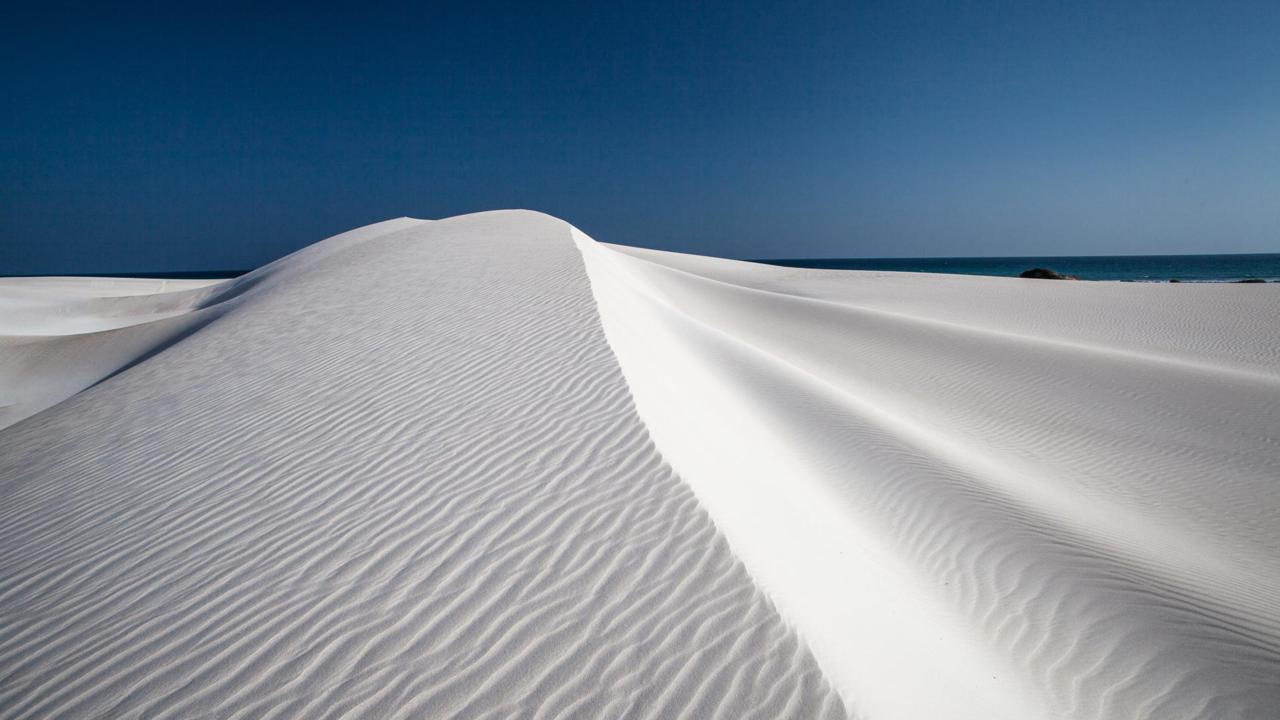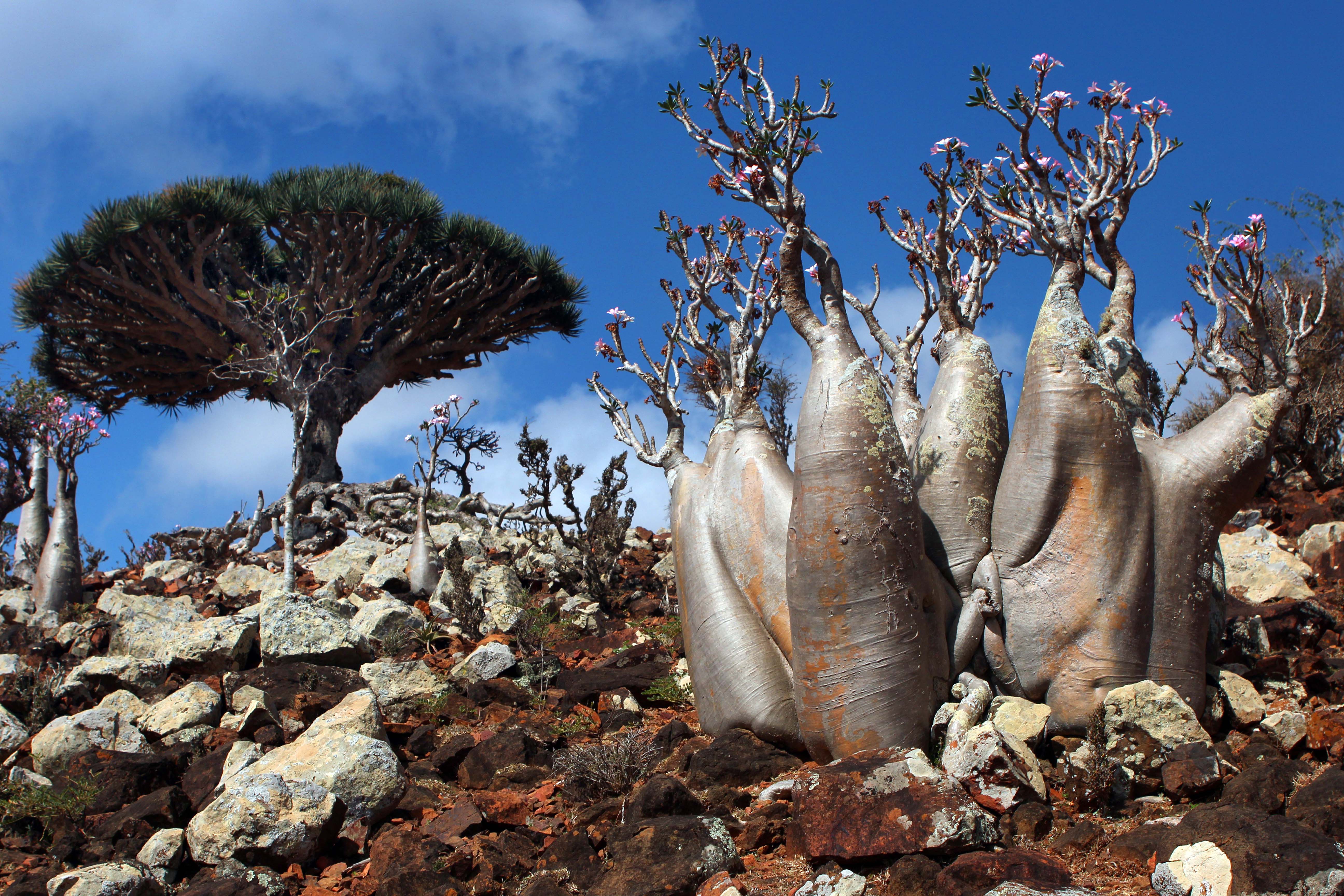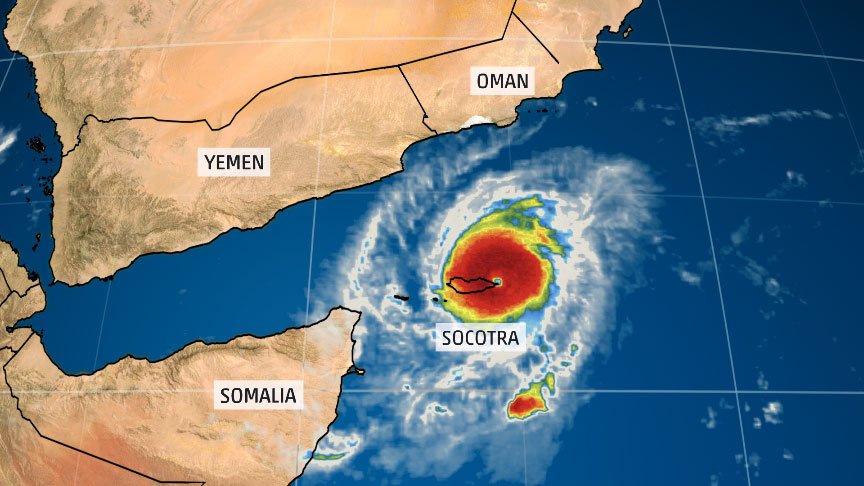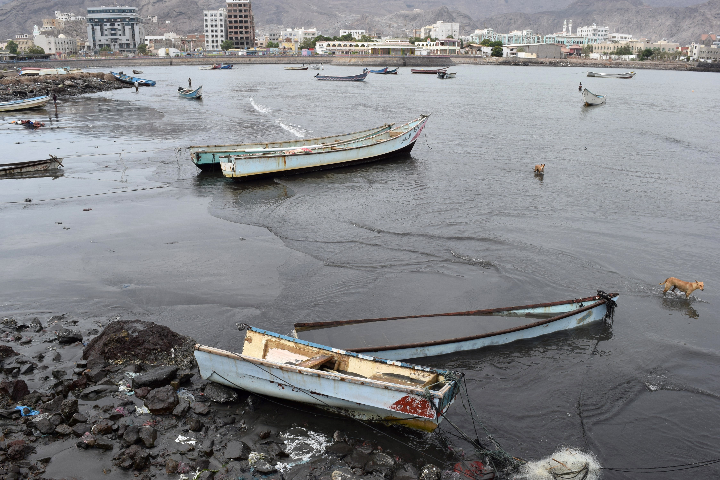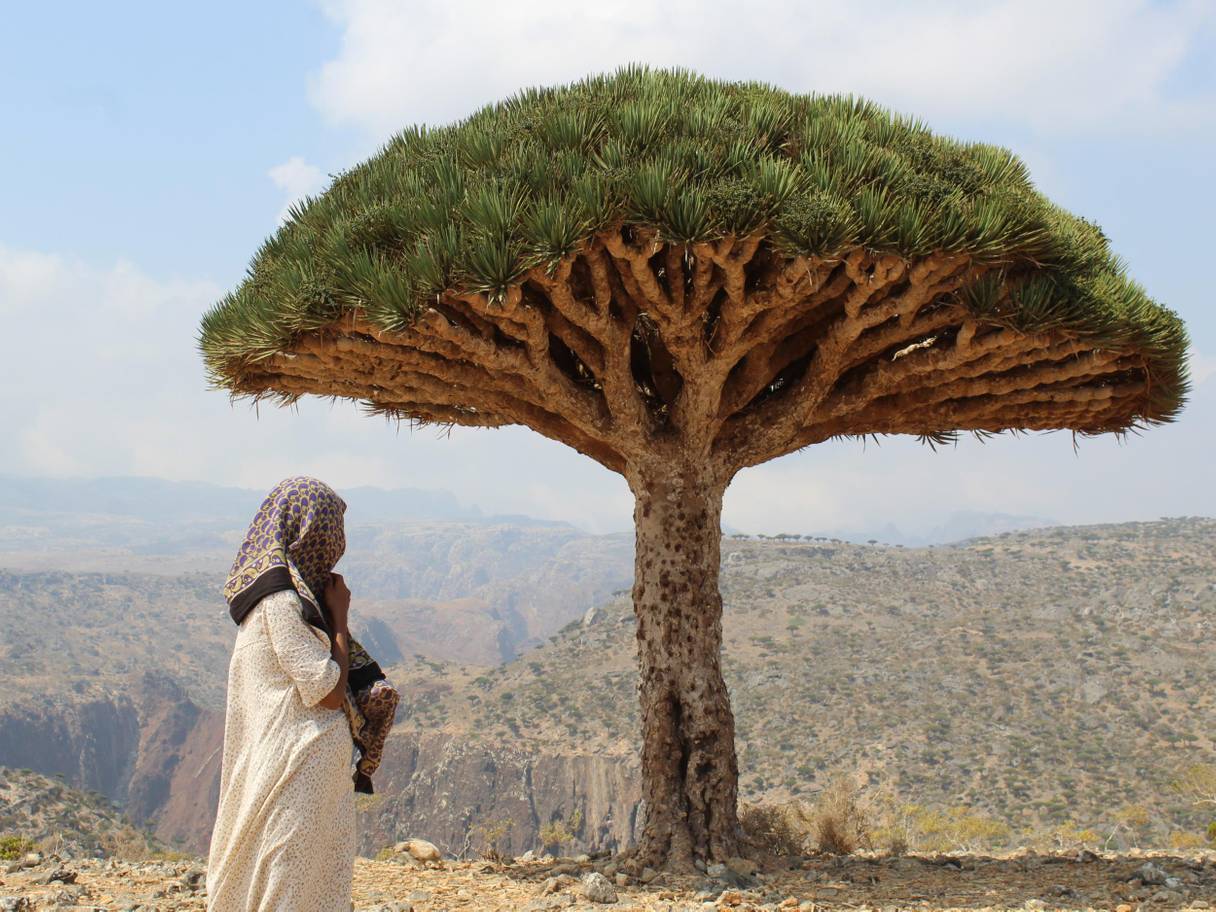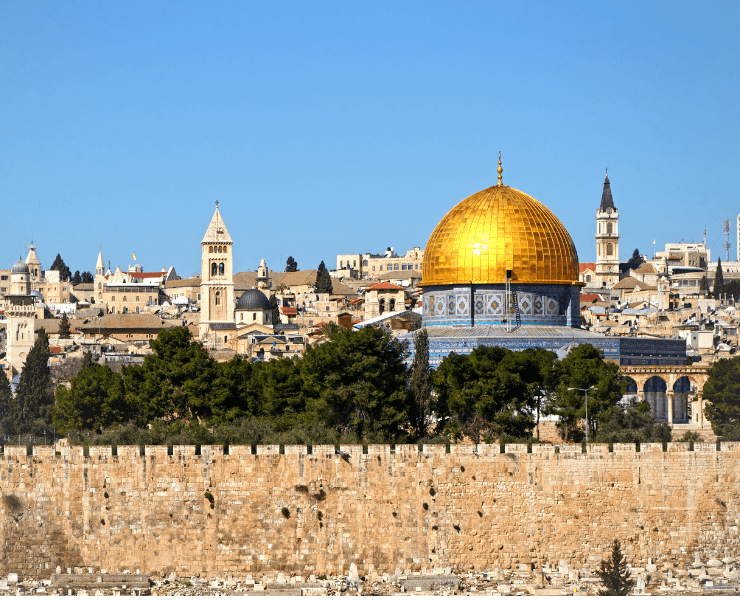Famous for its bizarre natural life and dramatic scenery, the Yemeni island of Socotra is an almost other-worldly paradise in the Indian Ocean. But this isolated UNESCO World Heritage Site is under threat from extreme weather and a bloody conflict encroaching on its peaceful way of life.
 (image: Juan Herrero)
(image: Juan Herrero)
Nicknamed ‘the Galapagos of the Indian Ocean’, the island of Socotra, which used to be part of mainland Africa before splitting off six or seven million years ago, is located around 350 kilometres off the coast of Yemen.
Its white dunes, limestone caves and green mountains are home to hundreds of plant and animal species that do not exist anywhere else in the world.
 (image: Juan Herrero)
(image: Juan Herrero)
Most famous is the Dragon’s Blood Tree, which is unique to Socotra and is known for its blood-red coloured sap. The tree’s top-heavy shape has evolved over time due to the need to preserve water by providing shade and preventing evaporation.
 (image: Lazer Horse)
(image: Lazer Horse)
Socotra is home to about 60,000 people, whose economic and social isolation from the rest of Yemen – and the world – has shaped their humble existence. The main source of income for the residents is fishing, livestock, honey and frankincense.
The island does not receive many tourists – which is a good thing! An influx of people would have a dangerous impact on the island’s environment and biodiversity.
It is strategically located just north of Somalia, giving it coveted access to major shipping routes.
 (image: Juan Herrero)
(image: Juan Herrero)
Socotra is also strategically important to the war effort in Yemen, which has led it to become an essential staging area for the Saudi-led coalition. The majority of troops and military hardware currently stationed on Socotra belong to the United Arab Emirates. The UAE has taken over strategic locations on the island, which many see as a power play and an attempt to gain a foothold in Yemen.
 Militarising paradise? A number of Emirati troops fighting against the Houthis in Yemen are currently stationed on Socotra
Militarising paradise? A number of Emirati troops fighting against the Houthis in Yemen are currently stationed on Socotra
The island’s location also makes it vulnerable to extreme weather patterns – which are becoming more frequent as a result of climate change. Sailors have historically been wary of stopping on Socotra due to its notoriety for violent storms and shipwrecks.
Hurricanes and cyclones continue to batter Socotra periodically today, particularly during the monsoon season. In May 2018, Cyclone Mekunu killed a number of people, sunk boats and caused severe flooding, which damaged houses and drowned thousands of animals.
 The aftermath of Cyclone Megh in 2015 (image: ARN News)
The aftermath of Cyclone Megh in 2015 (image: ARN News)
The future is far from certain for this UNESCO World Heritage Site and its plethora of weird and wonderful species.
It seems not even remote, isolated Socotra has escaped the impact of the twenty first century’s two greatest challenges: conflict and climate change.
 (image: The Independent)
(image: The Independent)
If you found this interesting, you might also like:
‘Dancing on the heads of snakes’: Yemen after Ali Abdullah Saleh
Why the Middle East’s next great security threat will come from the environment
The Daymaniyats: Arabian island paradise


